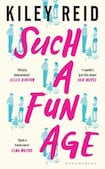
Growing up in Ireland in the 1980s and 1990s, I don’t remember a single black author on my primary or secondary school syllabus – or reading many stories that represented people of colour at all, never mind the immigrant experience of people of colour who increasingly joined our communities.
In recent times there have been efforts to address this. Authors such as Emma Dabiri and Melatu Uche Okorie have become major successes but clearly there is a lot more work to be done to ensure that there is a diversity of representation in the narratives that are published as a reflection of our society and times.
This representation matters not only to the minority groups who should be able to see themselves recognised and reflected in our national literature, but it is important for everyone in society in order to eradicate lazy stereotypes and assumptions. Reading evokes empathy. This lack of diversity in publishing is not an exclusively Irish problem either – in the UK, the Authors Licensing and Collecting Society reported last May that 94 per cent of all writers in the UK are white – no doubt as a consequence of the publishing industry itself where earlier this year it was reported that only 11 per cent of the industry identified as Bame (Black, Asian and minority ethnic).
Race dynamics
All of this to say that novels such as this powerful debut by American author Kiley Reid are integral to society’s understanding of nuanced race dynamics in our time. In the opening chapter, Emira, a young black graduate working part-time as a babysitter, is apprehended at a supermarket for suspected kidnapping of the white child in her charge. The explosive aftermath as Alix, Emira’s privileged white employer – a feminist blogger and influencer – resolves to put things right makes for compulsive reading.
Reid excels at dismantling the complicated relationship of mother, child and babysitter and holds the emotional labour of parenting up to the spotlight for fearless scrutiny. Having invested seven years babysitting for more than 50 families in New York City, Reid was inspired by her experience to interrogate the truth of these intimate connections between families and their support systems. Reid suggests that a valuable lesson she learned became her guiding principle when writing both adults and children in the novel.
“Even the most difficult children showed that all people, of all ages, have fantastic qualities mixed with what began as good intentions – whether or not their actions match.” This principle served her well as the text is even-handed and scrupulously empathetic in the creation of all of the characters, especially when they are not behaving as their best selves.
Unconscious biases
One of the most powerful impacts of this novel is the poignant observation of the explicit but also sometimes more casual, implicit racial discrimination that happens every day and everywhere to people of colour. It provokes the reader to quietly consider how aware they are of these daily incidents and hopefully to self-assess if they are capable of similar unconscious biases in their own lives. The book is unsparing but never didactic in this regard – so masterful is the storytelling that these insights intersect seamlessly with the fast-paced plot, great wit and the scrutiny of the complex interplay between a cast of utterly compelling characters.
Briar, the toddler in Emira's care, is one of the most believable children I've read in literature, with a fully developed personality and register all of her own
Filmmaker and actor Lena Waithe has already acquired the rights to adapt the book for the screen, calling it “a poignant novel that could not be more necessary”. The impulse is understandable as, stylistically alone, the crackling dialogue lends itself so well to adaptation. Reid interweaves teenage vernacular with middle-class mum and toddler chit-chat so authentically that every character reads completely unique and pitch-perfect.
Briar, the toddler in Emira’s care, is one of the most believable children I’ve read in literature, with a fully developed personality and register all of her own. Perhaps this is indicative of why the grand design of the novel knits together so impeccably. Reid is exceptional at recognising and delivering authentic details throughout a narrative that creates such vivid pictures of setting, time and place that every moment of the novel rings true. It is this carefully constructed infrastructure that supports the philosophies of the story to be delivered with such confident control.
In the end, Such a Fun Age delivers on the wave of excited hype that precedes it by offering the reader a book that hits the literary bullseye: a thrilling tour de force of humanity with something important to say. Something that we all need to hear.









